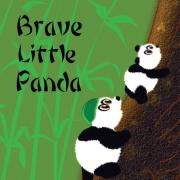FACT SHEET--Child Sexual Abuse in the Asian/Pacific Islander Community (San Francisco-based)
Demographics
· According to the 2010 Census, 33.7% of the population in San Francisco County identified as Asian/Pacific Islander alone. The total population of San Francisco was 805,235.
· About 13.4% of the county population was under 18.
· Over a 5-year period (2006-2010) it is estimated that 45.4% of the county population spoke a language other than English at home.
· 37.5% of the residents in San Francisco who spoke Asian and Pacific Island languages spoke English “not well” or “not at all,” 17.1% were considered “linguistically isolated”.
Prevalence
Child abuse is more common than one might expect. In San Francisco in 2011, there were 6,025 reports made for child abuse, and of these, 659 cases were substantiated (verified) as child abuse (Needell, et al., 2012):
· Sexual Abuse Cases: 9.7% of total child abuse reports made in 2011 in San Francisco were reports of sexual abuse. 3.8% of substantiated child abuse cases in San Francisco were for sexual abuse.
· Gender: 52.2% of substantiated child abuse cases in San Francisco were for females, and 47.8% of substantiated cases were for males. Among sexual abuse cases, 92% of substantiated cases were for females.
· Common Age Range: 23.4% of substantiated cases of abuse were for children 6-10, and 25.5% of substantiated cases were for children 11-15
· Asian/Pacific Islander community: 13.6% of total child abuse reports in San Francisco in 2011 were for API children. 7.2% of reports for API children were for sexual abuse. 13.4% of total substantiated cases of abuse were for API children. 2.3% of substantiated reports on an API child were for sexual abuse (Needell, et al., 2012). Based on an earlier study at a child sexual abuse resource center in San Francisco, it was estimated that 60% of Asian-American victims were abused by a male relative. (Futa et al, 2001)
Underreporting
There is believed to be significant underreporting of child abuse:
· Scope of the problem: It is estimated that as many as 80% of sexual abuse cases are not reported. (Zhai & Gao, 2008). Studies also estimate that less than one in ten actual cases of abuse is reported as a substantiated child abuse case. It is estimated that between 5-10% of girls and up to 5% of boys are exposed to penetrative sexual abuse in high-income countries like the U.S. (Gilbert, et al. 2009).
· Reasons for underreporting among Asian Pacific Islander populations: Studies suggest that Asian Americans may be less likely to report child abuse due to factors such as a lack of awareness of the definition of abuse, stigma associated with sexual abuse, protection of family name and privacy, parental authority, and children’s obedience to parents and elders (Zhai & Gao, 2008).
· Studies have shown that Asian American primary caretakers are less likely to report incidents of abuse and more likely to disbelieve reports. (Zhai & Gao, 2008).
Impact
· Children who suffer from sexual abuse may develop anxiety, depression, problems with self-esteem, abnormal sleep, and thoughts of suicide and attempt suicide. (Futa et al, 2001).
· Asian American children who were sexually abused were more likely to internalize their feelings and more likely to attempt suicide than other racial/ethnic groups. (Zhai & Gao, 2008)
Call for Action
Awareness of the scope of the problems and the contributing factors is a key to prevention. More research is required into the prevalence and impact of child sexual abuse in the API community. Intervention is needed that recognizes the specific needs and circumstances of the Asian Pacific Islander community.
References
U.S. Census Bureau. (2010). State & County Quickfacts: California and San Francisco County, CA Retrieved April 11, 2012, from https://www.census.gov/quickfacts/fact/table/ca/PST045217
Futa, K.T., Hsu, E., & Hansen, D.J. (2001). Child sexual abuse in Asian American families: An examination of cultural factors that influence prevalence, identification and treatment. Clinical Psychology: Science and Practice, 8(2), 189-209.
Gilbert, R., Widom, C. S., Browne, K., Fergusson, D., Webb, E., & Janson, S. (2009). Burden and consequences of child maltreatment in high-income countries. The Lancet, 373(9657), 68–81.
Needell, B., Webster, D., Armijo, M., Lee, S., Dawson, W., Magruder, J., Exel, M., Cuccaro-Alamin, S., Putnam-Hornstein, E., Williams, D., Simon, V., Hamilton, D., Lou, C., Peng, C., Moore, M., King, B., Henry, C., & Nuttbrock, A. (2012).Child Welfare Services Reports for California. Retrieved April 12, 2012 from University of California at Berkeley Center for Social Services Research website. http://cssr.berkeley.edu/ucb_childwelfare
Zhai, Fuhua, Qin Gao. (2008). Child Maltreatment Among Asian Americans: Characteristics and Explanatory Framework. Child Maltreatment. SAGE Publications: 14 (2), 207-224.













